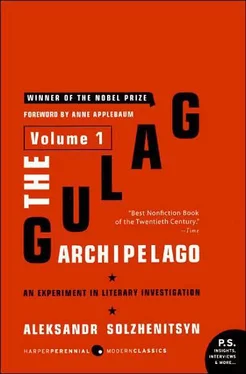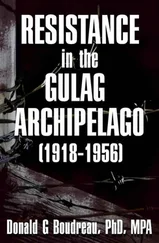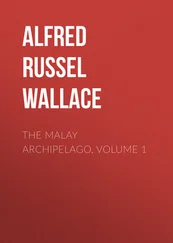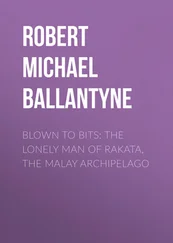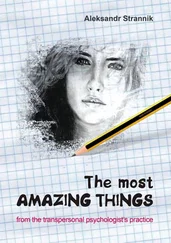This was 1937, the second year of the so-called “Mikoyan prosperity” in Moscow and other big cities. And even today, in the reminiscences of journalists and writers, one gets the impression that at the time there was already plenty of everything. This concept seems to have gone down in history, and there is a danger of its staying there. And yet, in November, 1936, two years after the abolition of bread rationing, a secret directive was published in Ivanovo Province (and in other provinces) prohibiting the sale of flour. In those years many housewives in small towns, and particularly in villages, still used to bake their own bread. Prohibiting the sale of flour meant: Do not eat bread! In the district center of Kady, long bread lines formed such as had never before been seen. (However, they attacked that problem, too, by forbidding the baking of black bread in district centers, permitting only expensive white bread to be baked.) The only bakery in the whole Kady District was the one in the district center, and people began to pour into the center from the villages to get black bread. The warehouses of the District Consumer Cooperative had flour, but the two parallel prohibitions blocked off all avenues by which it could be made available to the public! Vlasov, however, managed to find a way out of the impasse, and despite the clever government rulings he kept the district fed for a whole year: he went out to the collective farms and got eight of them to agree to set up public bakeries in empty “kulak” huts (in other words, they would simply bring in firewood and set the women to baking in ordinary Russian peasant ovens, but, mind you, ovens which were now socialized, publicly not privately owned). The District Consumer Cooperative would undertake to supply them with flour. There is eternal simplicity to a solution once it has been discovered! Without building any bakeries (for which he had no funds), Vlasov set them up in one day. Without carrying on a trade in flour, he released flour from the warehouse continuously and proceeded to order more from the provincial center. Without selling black bread in the district center, he gave the district black bread. Yes, he did not violate the letter of the instructions, but he violated their spirit—for their essence was to compel a reduction in flour consumption by starving the people. And so, of course, there were good grounds for criticizing him at the District Party Committee.
After that criticism he remained free overnight and was arrested the next morning. He was a tough little bantam rooster. He was short, and he always carried his head slightly thrown back, with a touch of aggressiveness. He tried to avoid surrendering his Party membership card, because no decision expelling him from the Party had been reached at the District Party Committee the night before. He also refused to give up his identification card as a deputy of the district soviet, since he had been elected by the people, and the District Executive Committee had not taken any decision depriving him of his deputy’s immunity. But the police did not appreciate such formalities and overpowered him, and took them away by main force. They took him from the District Consumer Cooperative down the main street of Kady in broad daylight, and his young merchandise manager, a Komsomol member, saw him from the window of the District Party Committee headquarters. At that time not everyone, especially in the villages, because of their naivete, had learned to keep quiet about what they thought. The merchandise manager shouted: “Look at those bastards! Now they’ve taken away my boss too!” Right then and there, without leaving the room, they expelled him from both the District Party Committee and from the Komsomol, and he slid down the well-known pathway into the bottomless pit.
Vlasov was arrested very late in comparison with the others who were charged in the same case. The case had been nearly completed without him, and it was in process of being set up as an open trial. They took him to the Ivanovo NKVD Internal Prison, but, since he was the last to be involved, he was not subjected to any heavy pressure. He was interrogated twice. There was no supporting testimony from witnesses. And the file of his interrogation was filled with summary reports of the District Consumer Cooperative and clips from the district newspaper. Vlasov was charged with: (1) initiating bread lines; (2) having an inadequate minimum assortment of merchandise (just as though the unavailable merchandise existed somewhere else and someone had offered it to Kady); (3) procuring a surplus of salt (but this was the obligatory “mobilization” reserve: ever since ancient times people in Russia have been afraid of being without salt in the event of war).
At the end of September, the defendants were brought to Kady for public trial. It was not a short trip. (Remember how cheap the OSO’s and the closed courts were!) From Ivanovo to Kineshma they went in a Stolypin railway car; then seventy miles from Kineshma to Kady in automobiles. There were more than ten cars, an unusual file along an old, deserted road, and one that aroused astonishment, fear, and the expectation of war in the villages. Klyugin, the Chief of the Special Secret Department of the Provincial NKVD for Counter-Revolutionary Organizations, was responsible for the faultless organization of the whole trial and for terrifying the public with it. Their convoy consisted of forty guards from the reserves of the mounted police, and every day from September 24 to 27, with swords unsheathed and Naguan revolvers at the ready, they took the prisoners from the District NKVD to the still unfinished club building and back, through the village where they had until recently been the government. Windows had already been installed in the club, but the stage had not yet been finished. There was no electricity. There was no electricity in Kady at all. After nightfall the court met by the light of kerosene lamps. The spectators were brought in from the collective farms in rotation. And all Kady crowded in as well. Not only did they sit on window sills and benches, but they stood packed in the aisles, seven hundred of them at a time. (Russians have always loved spectacles.) The forward benches were regularly reserved for Communists to provide the court with dependable support.
A Special Assize of the provincial court had been constituted, consisting of Deputy Chairman of the Provincial Court Shubin, who presided, and members Biche and Zaozerov. The provincial prosecutor Karasik, a graduate of Dorpat University, was in charge of the prosecution. And even though all the accused declined defense lawyers, a government lawyer was forced on them so that the case wouldn’t be left without a prosecutor. The formal indictment, solemn, menacing, and lengthy, came down in essence to the charge that an underground Rightist Bukharinite group had existed in Kady District, which had been formed in Ivanovo (in other words, you could expect arrests in Ivanovo too), and had as its purpose the overthrow by wrecking of the Soviet government in the village of Kady (and this was about the remotest boondock in all Russia the rightists could have found for a starting point!).
The prosecutor petitioned the court to have Stavrov’s testimony, given before his death in prison, read to the court and accepted as evidence. In fact, the whole charge against the group was based on Stavrov’s evidence. The court agreed to include the testimony of the deceased, just as if he were alive. (With the advantage, however, that none of the defendants could refute it.)
But darkest Kady did not appreciate these scholarly fine points. It waited to see what came next. The testimony of Stavrov, who had been killed under interrogation, was read to the court and once again became part of the record. The questioning of the defendants began—and immediately there was chaos. All of them repudiated the testimony they had given during the interrogation.
Читать дальше
